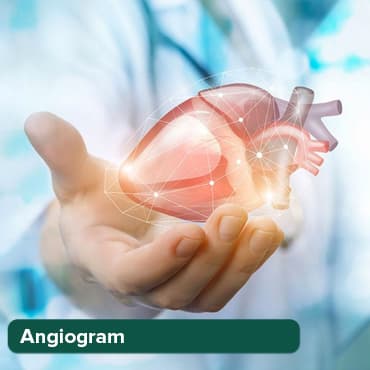
PET Scan for Hodgkin's Lymphoma: Diagnosis and Staging
16 May, 2023
Hodgkin's Lymphoma (HL) is a type of cancer that affects the lymphatic system, which is responsible for fighting infections and diseases in the body. It is a rare cancer that affects about 8,500 people each year in the United States. While the causes of HL are not yet fully understood, it is believed that a combination of genetic and environmental factors may contribute to its development. Early detection and accurate staging of HL are critical to ensure timely and effective treatment. Positron Emission Tomography (PET) scan is a non-invasive imaging technique that has become an essential tool in the diagnosis and staging of HL.
What is a PET Scan?
Transform Your Beauty, Boost Your Confidence
Find the right cosmetic procedure for your needs.

We specialize in a wide range of cosmetic procedures

PET scan is a medical imaging technique that uses a small amount of radioactive material called a tracer to produce three-dimensional images of the body. The tracer is injected into the body, and its movement is tracked using a special camera that detects the energy emitted by the tracer. The images produced by a PET scan can show how well organs and tissues are functioning and can help detect any abnormalities, including cancer.
PET Scan for HL Diagnosis
HL is often diagnosed through a combination of medical history, physical examination, and imaging tests. Imaging tests such as CT scans and X-rays can show the size and location of tumors, but they are not always sufficient to determine whether a tumor is cancerous. PET scan, on the other hand, can provide valuable information about the metabolic activity of cells in the body, which can help distinguish between cancerous and non-cancerous tissues.
During a PET scan for HL diagnosis, a patient is injected with a tracer called FDG (fluorodeoxyglucose), which is a form of glucose that is absorbed by cells in the body. Cancer cells, including those in HL, tend to absorb more glucose than normal cells because they are more metabolically active. As a result, cancerous tissue appears as a bright spot on the PET scan.
PET Scan for HL Staging
Staging is a process that determines the extent of cancer in the body and helps doctors plan appropriate treatment. HL has four stages, from stage I, where the cancer is localized, to stage IV, where it has spread to other parts of the body. PET scan is a crucial tool in HL staging because it can detect cancerous tissue in areas that may not be visible on other imaging tests.
Most popular procedures in India
Atrial septal defect
Upto 80% off
90% Rated
Satisfactory

Coronary Angiogram a
Upto 80% off
90% Rated
Satisfactory

Coronary Angiogram C
Upto 80% off
90% Rated
Satisfactory

Liver Transplant
Upto 80% off
90% Rated
Satisfactory

Total Hip Replacemen
Upto 80% off
90% Rated
Satisfactory

In HL staging, PET scan is usually performed in combination with a CT scan, which provides detailed images of the internal organs and tissues. PET/CT scan can provide comprehensive information about the location and size of tumors, as well as the degree of metabolic activity of cancer cells.
Advantages of PET Scan in HL Diagnosis and Staging
PET scan has several advantages over other imaging tests in HL diagnosis and staging. For instance, it can detect cancerous tissue in areas that may not be visible on other imaging tests, such as the bone marrow. It can also help distinguish between active cancer cells and scar tissue, which may be present in patients who have undergone previous cancer treatments.
PET scan can also help determine the effectiveness of cancer treatment by showing changes in metabolic activity over time. This can be particularly useful in monitoring patients who have undergone chemotherapy or radiation therapy, as it can help detect residual cancer cells or new cancerous growths.
Limitations of PET Scan in HL Diagnosis and Staging
While PET scan is a valuable tool in HL diagnosis and staging, it has some limitations that should be considered. For instance, it cannot always distinguish between cancerous and non-cancerous tissue with complete accuracy. In some cases, a biopsy may be necessary to confirm whether a tumor is cancerous or not.
Additionally, PET scan is not always recommended for patients with early-stage HL, as the cancerous tissue may not be metabolically active enough to be detected by the tracer used in the PET scan. Other imaging tests, such as CT scans or MRI, may be more appropriate for these patients.
Another limitation of PET scan is that it may not be able to detect very small cancerous lesions. In some cases, other imaging tests or a combination of imaging tests may be necessary to accurately detect and stage HL.
Conclusion
PET scan is a valuable tool in the diagnosis and staging of HL. It can detect cancerous tissue in areas that may not be visible on other imaging tests, and it can help distinguish between active cancer cells and scar tissue. PET/CT scan can provide comprehensive information about the location and size of tumors, as well as the degree of metabolic activity of cancer cells.
However, it is important to note that PET scan is not always accurate in distinguishing between cancerous and non-cancerous tissue, and it may not be appropriate for all patients. A combination of imaging tests, along with a medical history, physical examination, and biopsy, may be necessary to accurately diagnose and stage HL.
Early detection and accurate staging are critical for effective treatment of HL. Patients who are experiencing symptoms such as fever, night sweats, or unexplained weight loss, should consult with a healthcare professional to determine whether further testing, such as a PET scan, is necessary.
Advances in medical imaging and cancer treatment continue to provide hope for patients with HL and other forms of cancer. PET scan is just one of many tools that healthcare professionals can use to help diagnose and treat HL, and ultimately improve patient outcomes.
Wellness Treatment
Give yourself the time to relax
Lowest Prices Guaranteed!

Lowest Prices Guaranteed!
